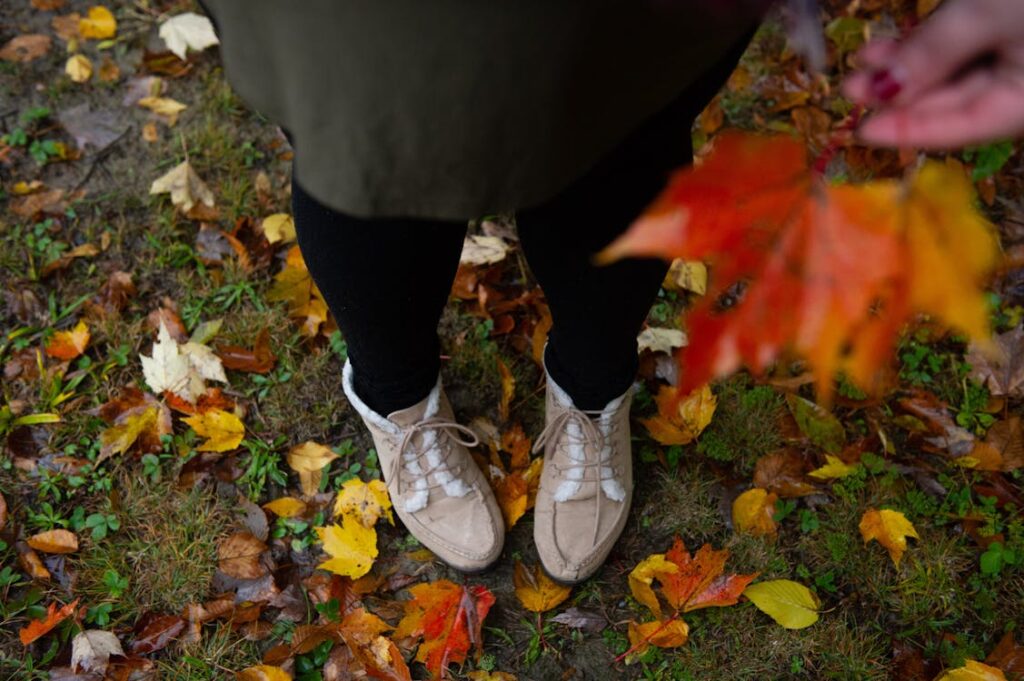
As the autumn season begins in New York City, the charm of colorful leaves and cool breezes comes with a hidden danger: slip-and-fall incidents. NYC residents often face seasonal hazards like wet leaves, uneven sidewalks, and early snowfalls, which can lead to injuries ranging from minor sprains to serious fractures. Understanding the risks and legal responsibilities associated with these happenings can help protect you and your loved ones this fall.
Common Causes of Autumn Slip-and-Fall Accidents
While slip-and-fall incidents can happen year-round, the autumn season presents unique challenges. Here are some of the most common causes
- Wet Leaves on Sidewalks and Pavements
Fallen leaves that become wet from rain or dew can create slippery surfaces, especially on concrete sidewalks and metal surfaces like subway entrances. According to a study published by the National Library of Medicine, slip-and-fall accidents are more common during periods of high precipitation, which includes rainy fall weather. - Uneven Sidewalks and Potholes
With the changing weather, sidewalks in NYC often develop cracks and uneven surfaces. Tree roots, construction, or general wear and tear can make sidewalks hazardous for pedestrians. In fact, a 2023 NYC Department of Transportation report revealed that over 80% of sidewalk defects are caused by tree roots . When combined with wet leaves or poor visibility in the shorter daylight hours, these uneven surfaces become even more dangerous. - Early Frost and Snow
While New Yorkers expect snow in winter, early autumn storms can surprise residents with icy sidewalks and streets. According to a study published in the American Journal of Public Health, nearly 1 million Americans are injured annually due to falls on ice and snow . Early fall freezes can catch property owners off guard, leading to delays in shoveling and salting sidewalks, thus increasing the risk of slip-and-fall incidents.
Who Is Liable for Autumn Slip-and-Fall Injuries in NYC?
In New York City, property owners are responsible for ensuring their premises are maintained in a reasonably safe condition. This includes keeping sidewalks clear of hazards such as wet leaves, ice, and other debris. Failure to do so may result in liability if someone slips and falls. The law governing premises liability in NYC places a duty on property owners, businesses, and even tenants to ensure that sidewalks are maintained, especially after rainfall or early snow. New York City Administrative Code states that property owners are required to clear snow and ice from sidewalks adjacent to their property within four hours after a storm ends, but there are no specific rules for wet leaves or other autumn-related hazards . However, this does not absolve property owners of their responsibility to ensure the area is safe from any slipping dangers.
- Residential and Commercial Property Owners
Both residential and commercial property owners have an obligation to maintain their sidewalks. A property owner could be held liable if it is shown that they were negligent in clearing hazards or failed to warn pedestrians about the dangerous conditions. - Government and Public Spaces
If a slip-and-fall occurs on government-owned property, such as parks or public transportation areas, the government agency responsible for maintaining that space may be liable.
What to Do If You’re Injured in a Slip-and-Fall Accident This Fall
If you or a loved one suffers an injury from a slip-and-fall event in NYC, it’s important to take certain steps to protect your rights:
- Seek Medical Attention
Even if your injury seems minor, some injuries like sprains, fractures, or even head trauma may not become apparent until later. Seeking medical help immediately ensures that you get the care you need and creates a medical record of the incident. - Document the Scene
If possible, take photos of the hazard (e.g., wet leaves, uneven sidewalk) that caused your fall. This will serve as evidence should you pursue a legal claim. Note the date, time, and weather conditions as well. - Report the Incident
Notify the property owner or authority responsible for the area where you fell. If you are in a commercial space, ask for an incident report to be filed. For injuries on public property, report the incident to the appropriate municipal body. - Consult a Personal Injury Attorney
Slip-and-fall cases often involve complex questions of liability, especially when government entities are involved. An experienced personal injury attorney can help you navigate the legal process and determine whether you have grounds for a lawsuit.
Preventing Slip-and-Fall Accidents
While not all slip-and-fall incidents can be avoided, there are steps that pedestrians and property owners can take to minimize the risk:
- For Pedestrians: Wear shoes with good traction, avoid walking on leaf-covered sidewalks, and use handrails when available.
- For Property Owners: Regularly clean leaves and debris from sidewalks, repair uneven surfaces, and address early frosts by salting walkways.
As beautiful as fall can be in New York City, it’s important to be mindful of the increased risk of slip-and-fall injuries. Whether you are a pedestrian or a property owner, understanding the hazards and legal responsibilities can help keep everyone safe during the autumn months. If you have been injured in a slip-and-fall incident, it’s crucial to seek legal advice to ensure your rights are protected and you receive the compensation you deserve.
